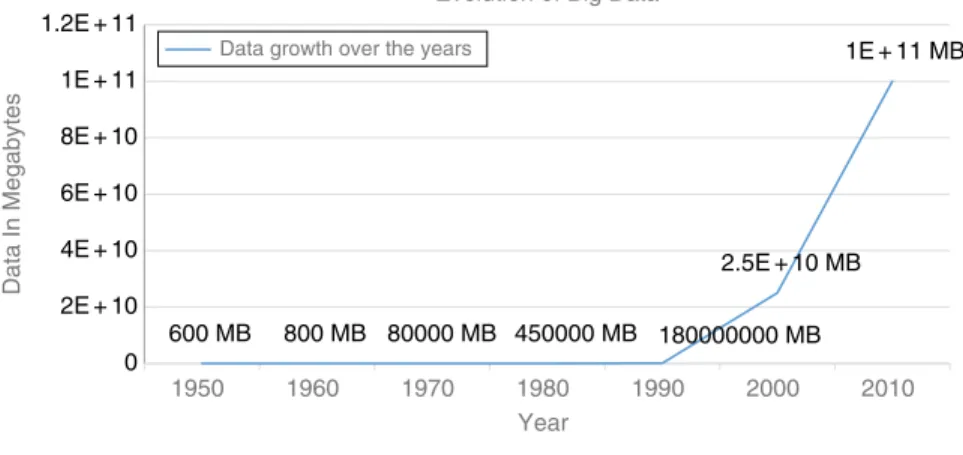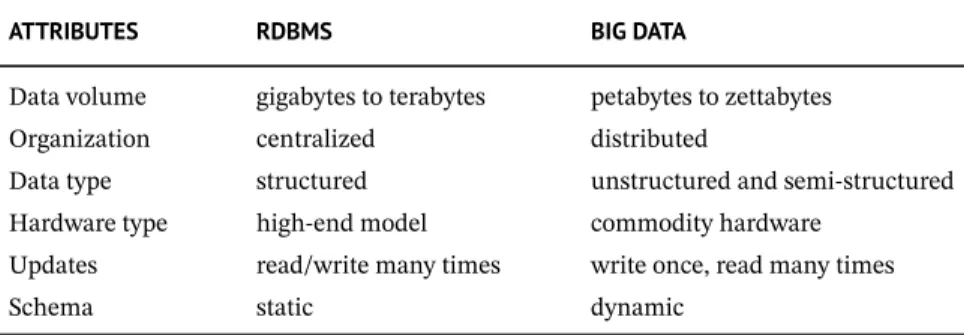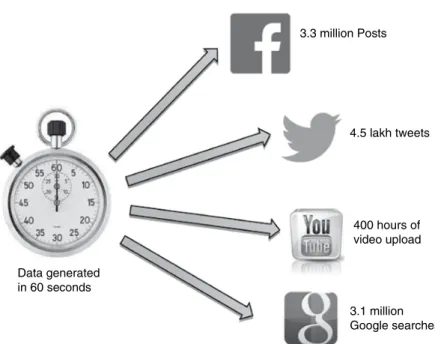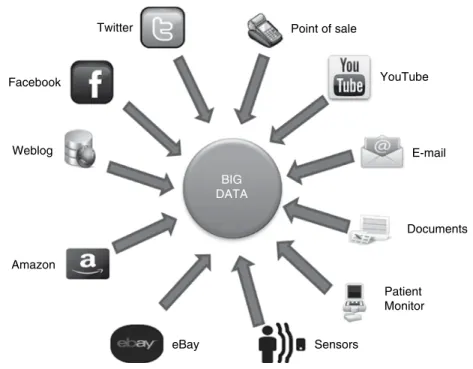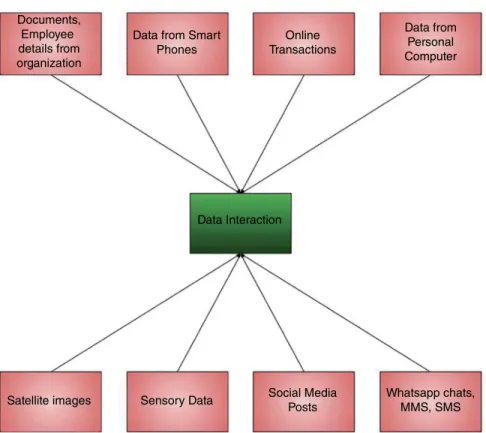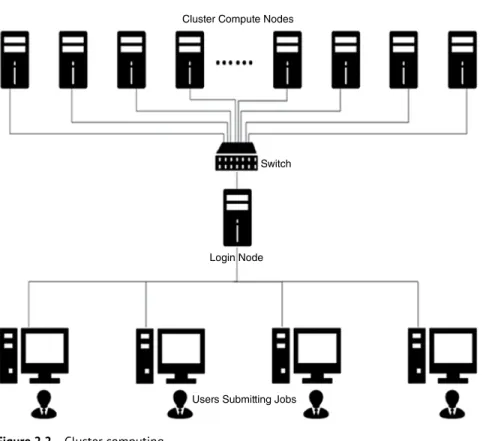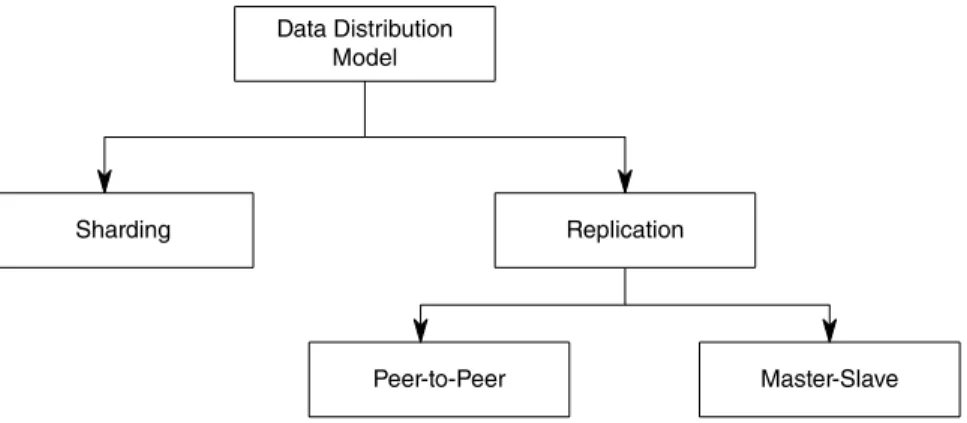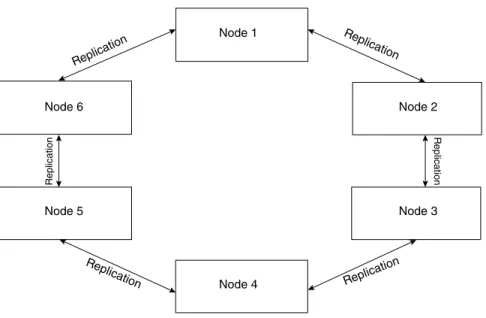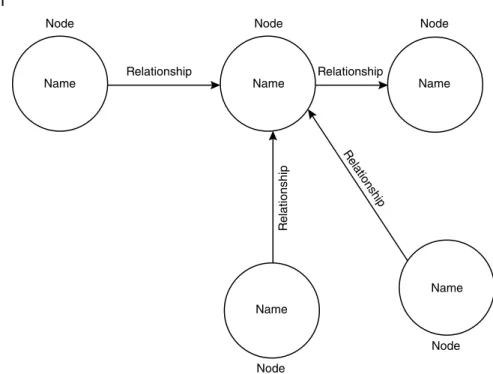Gandom to be identified as the author(s) of this work has been asserted in accordance with the law. This work is sold with the understanding that the publisher is not engaged in rendering professional services.
Acknowledgments
Special mention goes to my father, who supported my entire education, career and encouraged me to continue my higher studies. She holds a master's degree in information technology from the Vellore Institute of Technology, which investigated the effectiveness of machine learning algorithms in predicting heart disease.
About the Author
Understanding Big Data
With the rapid growth of internet users, there is an exponential growth in the data generated. The data is generated from millions of messages we send and communicate via WhatsApp, Facebook or Twitter, from the trillions of photos taken, and hours and hours of videos uploaded to YouTube every minute.
Introduction to the World of Big Data
Evolution of Big Data
The first documented appearance of big data was in a paper in 1997 by NASA scientists who reported on the problems of visualizing large data sets, which was a captivating challenge for the data scientists. The processing life cycle of big data can be categorized into acquisition, pre-processing, storage and management, privacy and security, analysis and visualization.
Failure of Traditional Database in Handling Big Data
- Data Mining vs. Big Data
Volume
Data generated and processed by big data is growing continuously and at an ever-increasing pace. Every time a link on a website is clicked, an item is purchased online, a video is uploaded to YouTube, and data is generated.
Velocity
The volume is growing exponentially due to companies continuously collecting data to create better and bigger business solutions. In the era of big data, a huge amount of data is generated at high speed, and sometimes this data comes in so fast that it becomes difficult to capture it, and yet the data needs to be analyzed.
Variety
Sources of Big Data
Web data: Data generated by clicking on a link on a website is recorded by the online retailers. Organizational Data: Email transactions and documents generated within the organizations collectively contribute to the Organizational Data.
Different Types of Data
- Structured Data
- Unstructured Data
- Semi-Structured Data
Semi-structured data is that which has a structure but does not fit into the relational database. Semi-structured data is organized, which makes it easier to analyze compared to unstructured data.

Big Data Infrastructure
MapReduce – MapReduce is the batch processing programming model for the Hadoop framework, which uses a divide-and-conquer principle. Its performance significantly reduces processing time compared to the traditional batch processing paradigm, because the traditional approach was to move the data from the storage platform to the processing platform, while the MapReduce processing paradigm resides in the framework where the data is stored. actually resides.
Big Data Life Cycle
- Big Data Generation
- Data Aggregation
- Data Preprocessing
- Data Integration
- Data Cleaning
- Data Reduction
- Data Transformation
- Big Data Analytics
- Visualizing Big Data
To detect the type of error and inconsistency in the data, a detailed analysis of the data is required. Organizations collect a large amount of data, and the volume of the data is increasing rapidly.
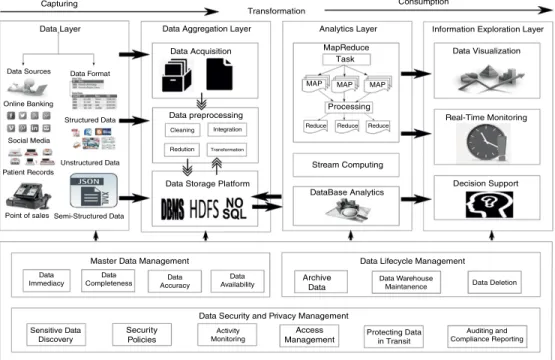
Big Data Technology
- Challenges Faced by Big Data Technology
- Heterogeneity and Incompleteness
- Volume and Velocity of the Data
- Data Storage
- Data Privacy
Data protection is another concern that grows with the increase in data volume. Therefore, there should be a conscious access control to the data at different stages of the big data life cycle, namely data collection, storage and management and analysis.
Big Data Applications
Who should be given access to data, the limitation of data access and the time of data access should be determined in advance to ensure data protection. Such sensitive data must be well protected before being submitted for analysis.
Big Data Use Cases
- Health Care
- Telecom
- Financial Services
Big data predictive analytics tools are used to identify and prevent new fraud patterns. With big data solutions, these advisors are now armed with insights from the data collected from multiple sources.
Chapter 1 Refresher
is the process of transforming data into a suitable format that is acceptable by the large database. Explanation: Data transformation refers to transforming or consolidating data into a suitable format that is acceptable to big databases and converting it into logical and meaningful information for data management and analysis.
Conceptual Short Questions with Answers
The data aggregation phase of the big data lifecycle involves collecting the raw data, transferring the data to a storage platform and pre-processing it. The greater the heterogeneity of the data sources, the higher the degree of dirtiness.
Frequently Asked Interview Questions
Data transformation refers to transforming or consolidating data into an appropriate format acceptable to a big data base and converting it into logical and meaningful information for data management and analysis. In Figure 2.1, the data from the source flows through Hadoop, which acts as an online archive.
Big Data Storage Concepts
- Cluster Computing
- Types of Cluster
- Cluster Structure
- Distribution Models
- Sharding
- Data Replication
- Sharding and Replication
- Distributed File System
- Relational and Non-Relational Databases
- RDBMS Databases
- NoSQL Databases
- NewSQL Databases
- Scaling Up and Scaling Out Storage
- Chapter 2 Refresher
Replication is the process of creating copies of the same data set across multiple servers. Scalability is the system's ability to meet increasing demand for storage capacity.
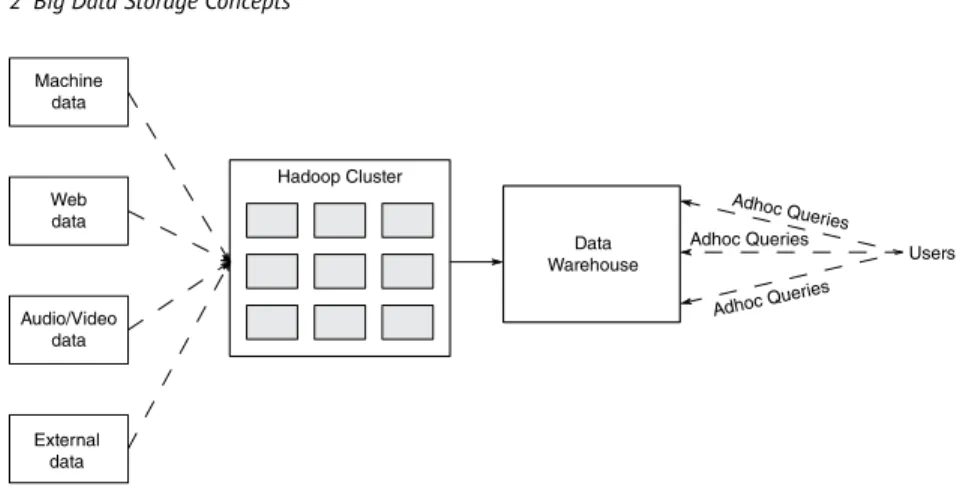
Conceptual Short Questions with Answers
Introduction to NoSQL
Horizontal scalability, flexible schema, reliability and fault tolerance are some of the features of NoSQL databases. NoSQL databases are structured in one of the following ways: key-value pairs, document-oriented database, graph database, or column-oriented database.
NoSQL Database
Why NoSQL
The NoSQL database has been introduced in recent years to overcome the disadvantages of traditional RDBMS. Since NoSQL databases are schemaless, it becomes very easy for developers to integrate massive data from different sources, making NoSQL databases suitable for large data storage requirements that require housing different data types in a single shell.
CAP Theorem
Consistency and Availability (CA) – if the system requires consistency (C) and availability (A), the available nodes must communicate to ensure consistency (C) in the system; therefore network partitioning is not possible. Consistency and Partition Tolerance (CP) – If consistency (C) and partition tolerance (P) are required by the system, system availability is affected while consistency is being achieved.
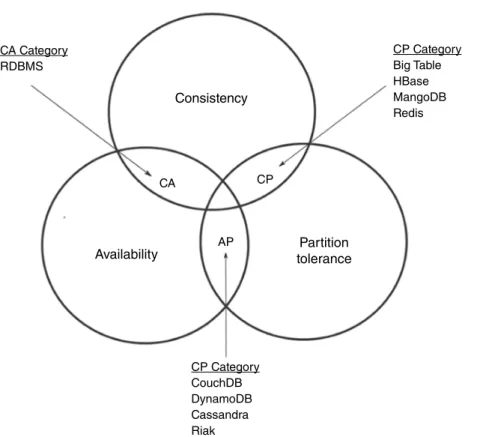
ACID
Availability and Partition Tolerance (AP) – If the system requires Availability (A) and Partition Tolerance (P), the consistency (C) of the system is lost as the communication between the nodes is lost so the data will be available but with inconsistency . On the other hand, if a transaction is executed but the system crashes before the data is written to disk, the data is updated when the system is brought back into action.
BASE
If a transaction attempts to update data in a database and completes it successfully, the database will contain the changed data.
Schemaless Databases
The key-value type of a NoSQL database allows the user to store arbitrary data under a key. The graph database allows the user to add edges and properties without any restrictions.
NoSQL (Not Only SQL)
- NoSQL vs. RDBMS
- Features of NoSQL Databases
- Types of NoSQL Technologies 1) Key-value store database
- Key-Value Store Database
- Column-Store Database
- Document-Oriented Database
- Graph-Oriented Database
- NoSQL Operations
The first part of the command is used to insert a document into a database where studCollection is the name of the collection. Create Collection—The command db.createCollection(name, options) is used to create a collection, where name is the name of the collection and is of type string, and options are the memory size, indexing, maximum number of documents, and so on , which is optional to be called and is of type document.
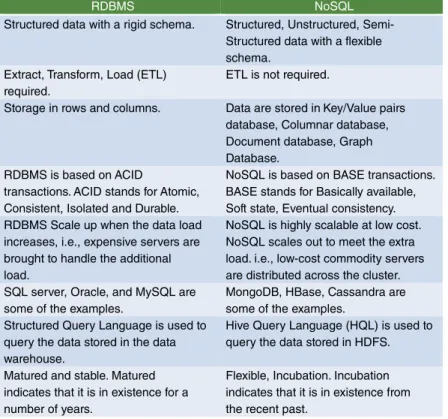
Migrating from RDBMS to NoSQL
Chapter 3 Refresher
- Data Processing
10 The maximum size of a covered collection is determined by which of the following factors. A graph-oriented database stores entities also known as nodes and the relationships between them.
Processing, Management Concepts, and Cloud Computing
Shared Everything Architecture
- Symmetric Multiprocessing Architecture
- Distributed Shared Memory
All-shared architecture is a type of system architecture that shares all resources, such as storage, memory, and processor. Distributed shared memory is a type of memory architecture that provides multiple memory pools for the processors.
Shared-Nothing Architecture
In a symmetric multiprocessing architecture, all processors share a single memory pool for concurrent read and write access. Latency in this architecture depends on the distance between the processors and their respective memory areas.
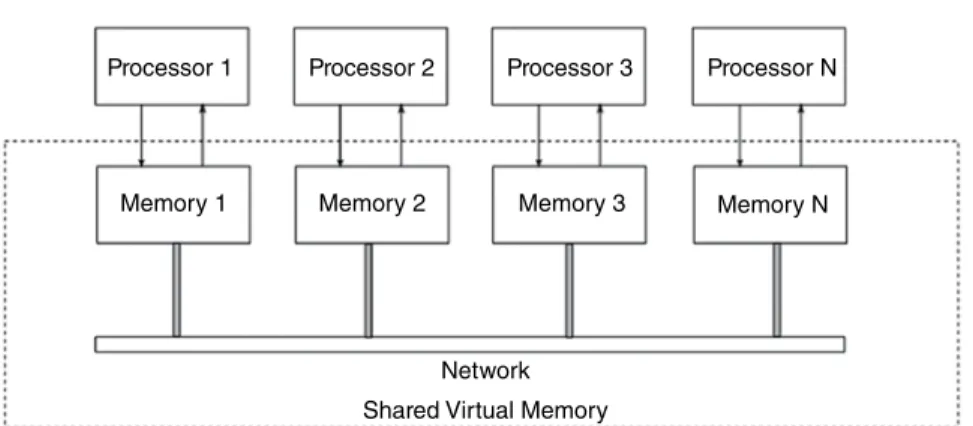
Batch Processing
Real-Time Data Processing
Online transactions, ATM transactions, point-of-sale transactions are some of the examples that need to be processed in real-time. Real-time data processing enables organizations to respond with low latency where immediate action is required to detect transactional fraud in near real-time.
Parallel Computing
Distributed Computing
Big Data Virtualization
- Attributes of Virtualization Three main attributes of virtualization are
- Encapsulation
- Partitioning
- Isolation
- Big Data Server Virtualization
VMs run guest operating systems independent of the host operating system. Virtualization works by inserting a layer of software into the computer's hardware in the host operating system.
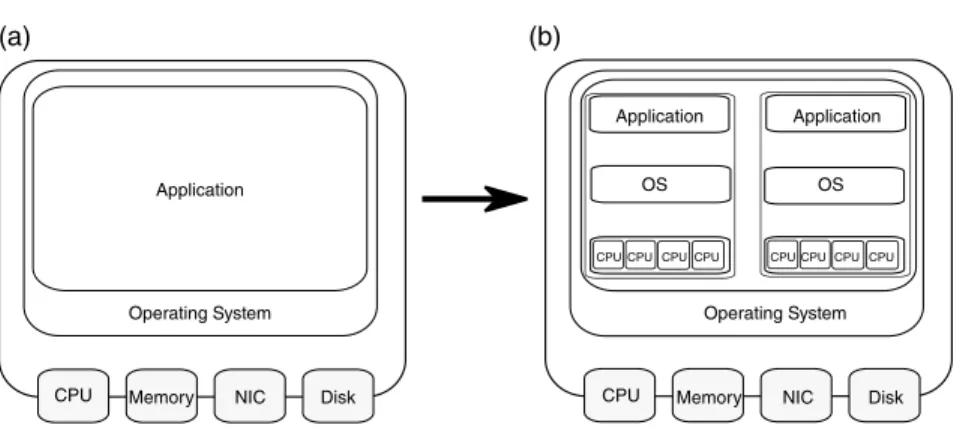
Introduction
One of the key aspects of improving the performance of big data analysis is the locality of the data. Since the data lies in the premises of the supplier, data security and privacy always become a questionable aspect.
Cloud Computing Types
On-premise private cloud is the internal cloud hosted in an organization's data center. An externally hosted private cloud is hosted by external cloud service providers with a full guarantee of privacy.
Cloud Services
The two variations of a private cloud are on-premise private cloud and externally hosted private cloud. In an externally hosted private cloud, customers are provided with an exclusive cloud environment.
Cloud Storage
- Architecture of GFS
- Master
- Client
- Chunk
- Read Algorithm
Metadata of the entire file system is managed by the master along with namespace, location of chunks in the chunkserver and access control. If the size of the chunks is 64 MB, metadata of only 16 chunks is stored, which makes a big difference.
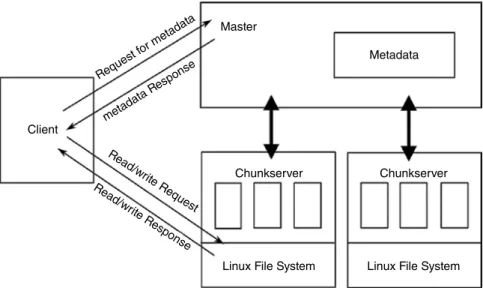
Read request is initiated by the application
The average size of blocks varies in KB while the default size of chunks in GFS is 64 MB. Also, the size of metadata is reduced with the increase in the size of the piece.
Filename and byte range are translated by the GFS client and sent to the master. Byte range is translated into chunk index while the filename
The client's role is to communicate with the master to gather information about which server to contact. Since in the world of Google, terabytes of data and GBs of files are common, 64MB was a mandatory size.
Replica location and chunk handle is sent by the master Figure 4.15a shows the first three steps of the read algorithm
Master issues periodic instructions to chunkservers, collects information about their state, and tracks cluster health. Once the metadata is retrieved, all the data-bearing operations are performed with the chunkservers.
Location of the replica is picked by the client and request is sent Step 5: Requested data is the sent by the chunkserver
This includes mapping from files to chunks, details of each chunk's copy location and file management, access control information, and chunk namespaces.
Data received from the chunkserver is sent to application by the client
- Write Algorithm
In addition to maintaining metadata, the master is also responsible for managing chunks and deleting the obsolete replicas.
Filename and data are translated by the GFS client and sent to the mas- ter. Data is translated into chunk index while the filename remains
Primary and secondary replica locations along with chunk handle are sent by the master
The data to be written is pushed by the client to all locations. Data is stored in the internal buffers of the chunkservers
Write command is sent to the primary by the client
Serial order for the data instances is determined by the primary
Serial order is sent to the secondary and write operations are performed
Secondaries respond to primary
Primary in turn respond to client
- Cloud Architecture
- Cloud Challenges
The back-end is the cloud infrastructure that consists of the resources namely data storage, servers and network required to provide services to the customers. Interoperability – Interoperability is the ability of the system to provide services to the applications from other platforms.
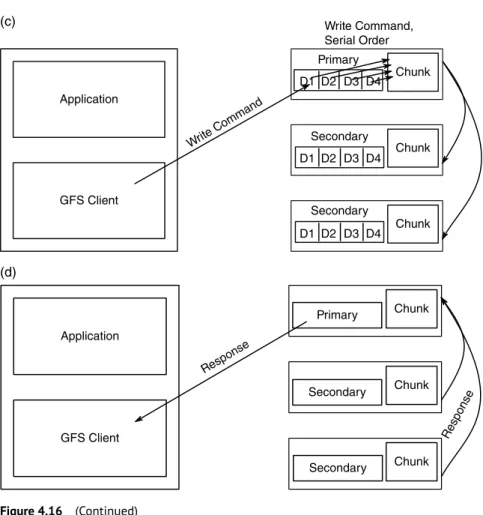
Chapter 4 Refresher
The hack would attack many customers even if only one site of the cloud service provider is attacked. Unavailability of services around the clock results in frequent outages, which reduce the reliability of the cloud service.
Cloud Computing Interview Questions
Apache Hadoop
Apache Hadoop is an open source framework written in Java that supports the processing of large data sets in the streaming access model across clusters in a distributed computing environment. It can store a large volume of structured, semi-structured and unstructured data in a distributed file system (DFS) and process them in parallel.
Driving Big Data with Hadoop Tools and Technologies
Architecture of Apache Hadoop
The details of each of the components in the Hadoop architecture are explained in the following sections in this chapter.
Hadoop Ecosystem Components Overview Hadoop ecosystem comprises four different layers
Job processing is handled by MapReduce, while resource allocation and job scheduling and monitoring are handled by YARN.
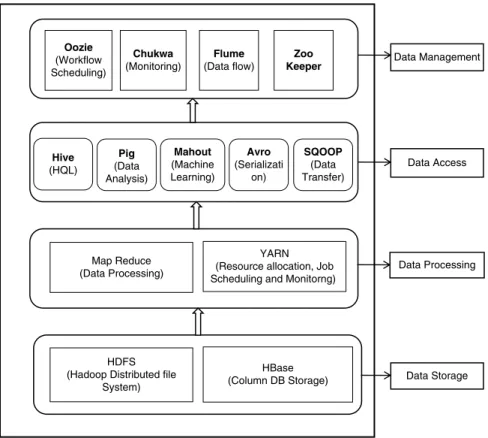
Hadoop Storage
- HDFS (Hadoop Distributed File System)
- Why HDFS?
- HDFS Architecture
- HDFS Read/Write Operation
- Rack Awareness
- Features of HDFS .1 Cost-Effective
- Distributed Storage
- Data Replication
The assignment of the block to the DataNode is performed by the NameNode, that is, the NameNode decides which block of the file should be placed in a specific DataNode. If one of the DataNodes fails in the meantime, data is read from the block where the same data is replicated.
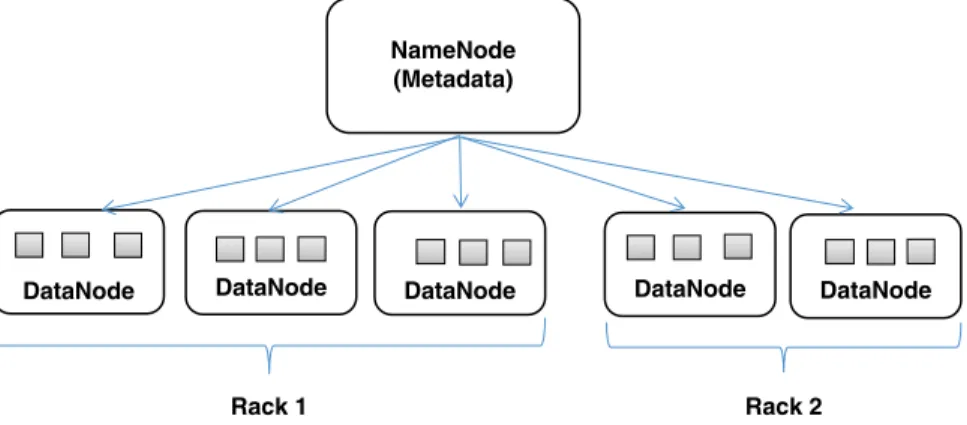
Hadoop Computation
- MapReduce
- Mapper
- Combiner
- Reducer
- MapReduce Input Formats The primitive data types in Hadoop are
- MapReduce Example
- MapReduce Processing
- MapReduce Algorithm
- Limitations of MapReduce
This is the second line of the input file, And this is the last line of the input file. The input file is split into three records and the key-value pair of the above input is:.
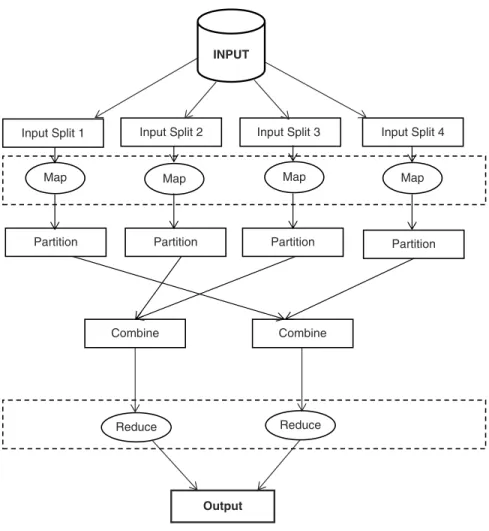
Hadoop 2.0
- Hadoop 1.0 Limitations
- Features of Hadoop 2.0
- Yet Another Resource Negotiator (YARN)
- Core Components of YARN
- ResourceManager
- NodeManager
- YARN Scheduler
- FIFO Scheduler
- Capacity Scheduler
- Fair Scheduler
- Failures in YARN
- ResourceManager Failure
- ApplicationMaster Failure
- NodeManager Failure
- Container Failure
In other words, a container is an application's rights to use resources. In the latest version of the YARN architecture, one way is to have an active and a passive ResourceManager.
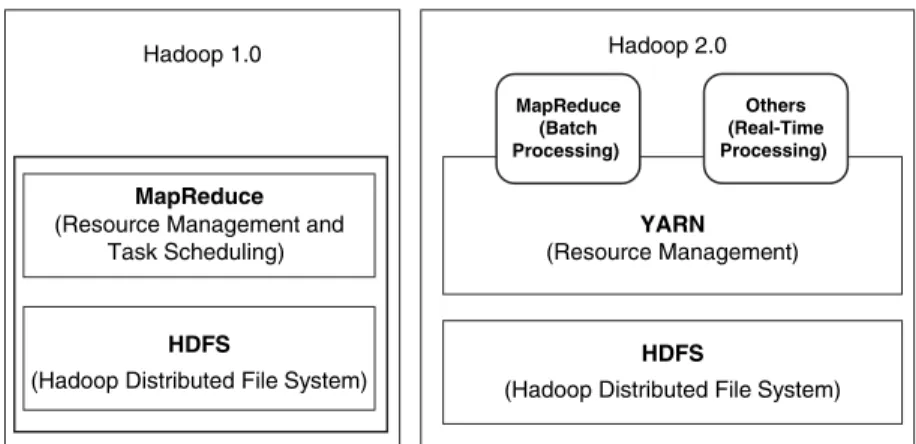
HBASE
- Features of HBase
MemStore - Data to be written to disk is first written to MemStore and WAL. When the MemStore is full, a new HFile is created on HDFS and the data from the MemStore is transferred to disk.
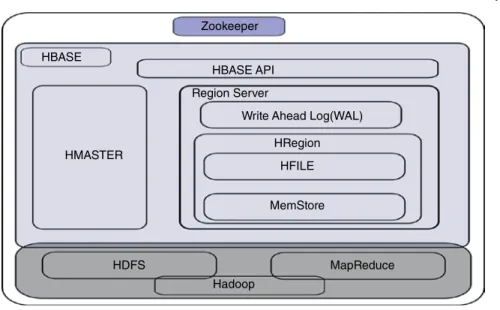
Apache Cassandra
Since shrinking storage uses low-cost storage hardware and components, HBase is cost-effective. Column-oriented – In contrast to a relational database, which is row-oriented, HBase is column-oriented.
SQOOP
The final results after the analysis is done are exported back to the database for future use by other customers. Files are passed as input to SQOOP, where the input is read and parsed into records using user-defined delimiters.
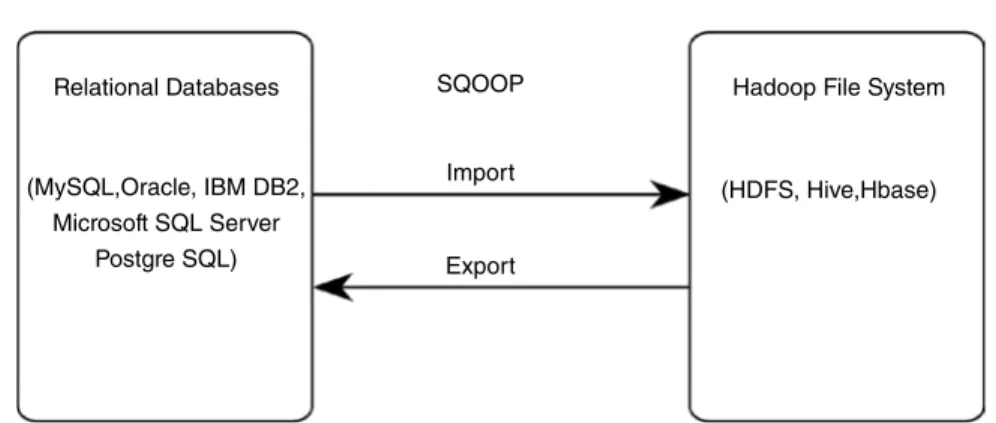
Flume
- Flume Architecture
- Event
- Agent
The channels are the temporary stores to hold the events from the sources until they are transferred to the sink. The transaction is marked complete only when the event transmission from the Source to the Channel is successful.
Apache Avro
The serialized data schema is written in JSON and stored with the data in a file called an Avro data file for further processing. Since Avro schemas are defined in JSON, it facilitates easy data implementation in languages that already have JSON libraries.
Apache Pig
The Avro schema contains details about the type of record, the name of the record, the location of the record, the fields in the record, and the data types of the fields in the record. Internally, Pig Latin scripts are turned into MapReduce jobs and executed in a Hadoop distributed environment.
Apache Mahout
This conversion is performed by the Pig Engine, which accepts Pig Latin scripts as input and produces MapReduce jobs as output. The execution engine sends the MapReduce jobs to Hadoop, and then those MapReduce jobs are executed in a Hadoop distributed environment.
Apache Oozie
- Oozie Workflow
- Oozie Coordinators
- Oozie Bundles
Coordinator jobs – These jobs are scheduled to run periodically based on the frequency or availability of input data. The start and end of the workflow define the start and end control nodes.
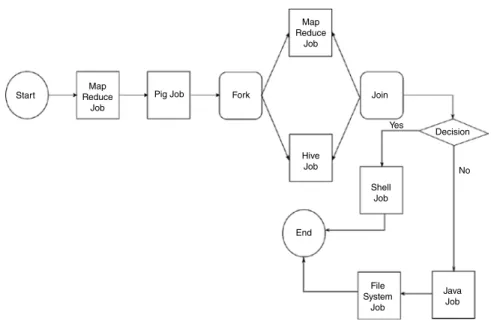
Apache Hive
If the data is not available at 8 AM, the coordinator waits until the data is available and then it triggers the workflow. This is solved by organizing the tables into partitions, where the tables are divided into related parts that are based on the data of the separated columns.
Hive Architecture
Blueprint Executor - Once compilation and parsing is complete, the compiler sends the JDBC/ODBC Blueprint.
Hadoop Distributions
Amazon Elastic MapReduce (Amazon EMR)—Amazon EMR is used to analyze and process massive data by distributing work across virtual servers in the Amazon cloud. Clickstream analysis to segment users into different categories to understand user preferences, and advertisers analyze clickstream data to serve more effective ads to users.
Chapter 5 Refresher
- Terminology of Big Data Analytics
- Data Warehouse
Four is the default number of times a task can fail, and it can be modified. Replication factor is the number of times a data block is stored in the Hadoop cluster.
Big Data Analytics
Business Intelligence
Business intelligence (BI) is the process of analyzing data to provide the desired results to organizations and end users for decision making. BI data includes both in-memory data (data that is previously captured and stored) and data that flows to help organizations make strategic decisions.
Analytics
Big Data Analytics
- Descriptive Analytics
- Diagnostic Analytics
- Predictive Analytics
- Prescriptive Analytics
Predictive analytics provides valuable and actionable insights to companies based on the data by predicting what might happen in the future. Diagnostic analytics is used to analyze and understand customer behavior, while predictive analytics is used to predict future behavior of customers, and prescriptive analytics is used to influence this future behavior.
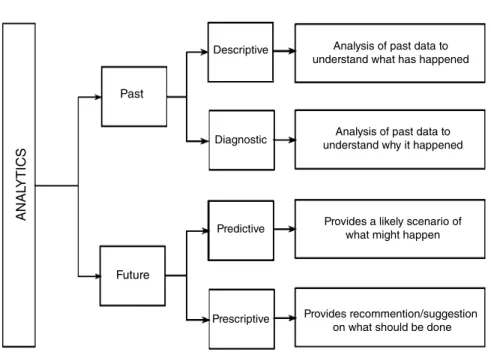
Data Analytics Life Cycle
- Business Case Evaluation and Identification of the Source Data
- Data Preparation
- Data Extraction and Transformation
- Data Analysis and Visualization
- Analytics Application
It must be determined whether the available data is sufficient to achieve the target analysis. If the available data is not sufficient, either additional data must be collected or available data must be transformed.
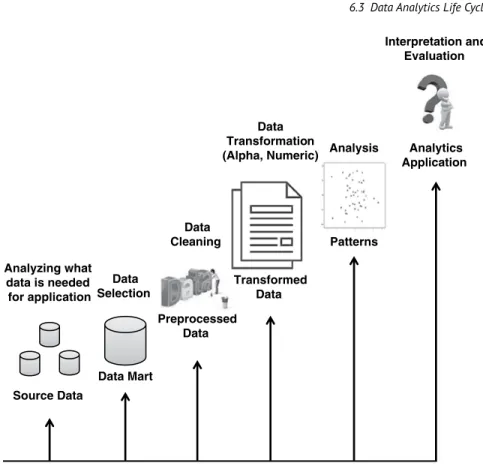
Big Data Analytics Techniques
- Quantitative Analysis
- Qualitative Analysis
- Statistical Analysis
- A/B Testing
- Correlation
- Regression
If the value of the correlation coefficient is zero, it means that there is no relationship between the variables. If the value of the correlation coefficient is close to +1, it indicates high positive correlation.
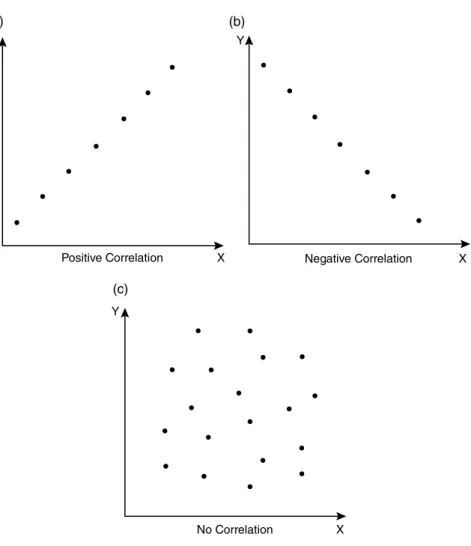
Semantic Analysis
- Natural Language Processing
- Text Analytics
- Sentiment Analysis
Search and retrieval—This is the process of identifying the document that contains the search item. Sentiment analysis is also known as opinion mining as it is the process of determining the opinion or attitude of the author.
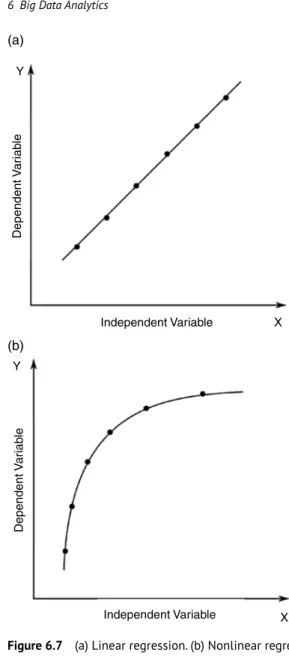
Visual analysis
Big Data Business Intelligence
- Online Transaction Processing (OLTP)
- Online Analytical Processing (OLAP)
- Real-Time Analytics Platform (RTAP)
Multidimensional is the basic requirement of the OLAP system, which refers to the system's ability to provide a multidimensional view of the data. Information refers to the system's ability to process large amounts of data obtained from the data warehouse.
Big Data Real-Time Analytics Processing
Real-time analytics platform (RTAP) applications can be used to alert end users when a situation occurs, and also provide users with options and recommendations for appropriate action. Master data is that which describes customers, products, employees and others involved in transactions.
Enterprise Data Warehouse
Reference data is that associated with transactions with a set of values, such as the order status of a product, an employee designation, or a product code. The middle layer of the diagram shows various big data technologies to store and process large volumes of unstructured data coming from multiple data sources such as blogs, blogs, and social media.
Chapter 6 Refresher
Data warehouse, also called Enterprise Data Warehouse, is a repository for the data collected by various organizations and businesses. Business intelligence is the process of analyzing the data and delivering a desired output to the organizations and end users to help them in decision making.
